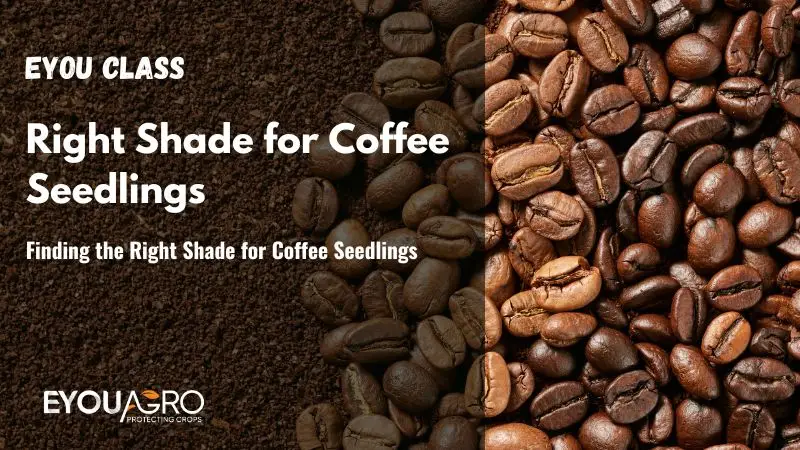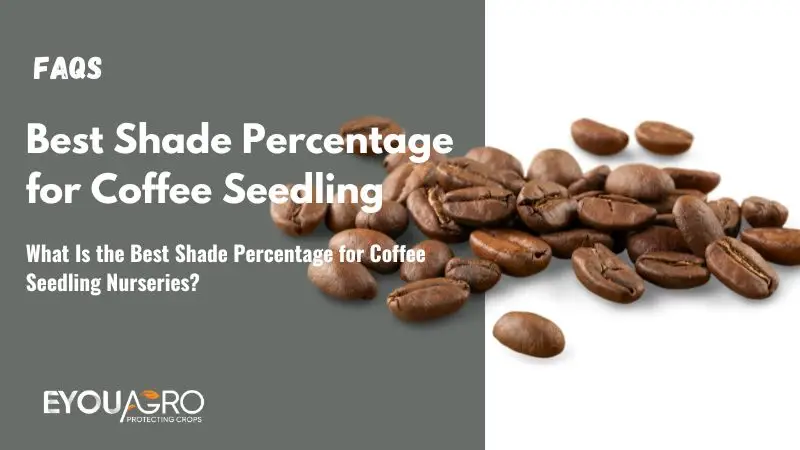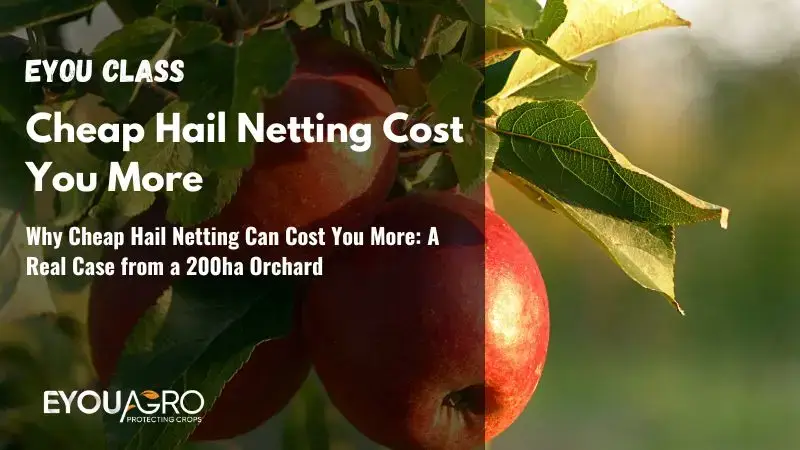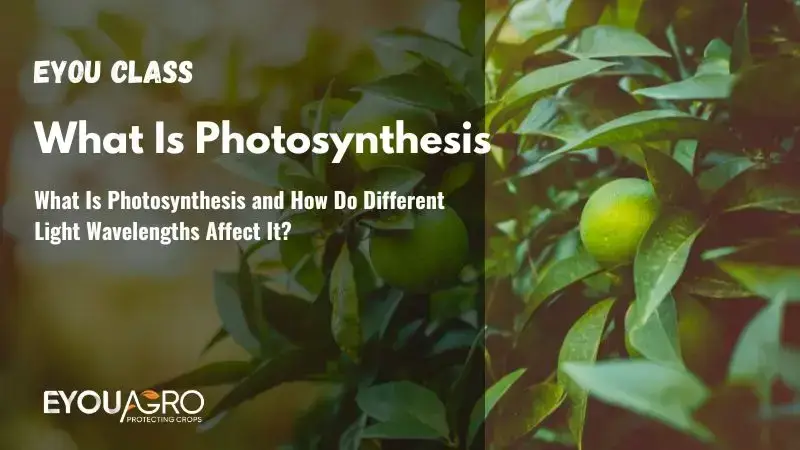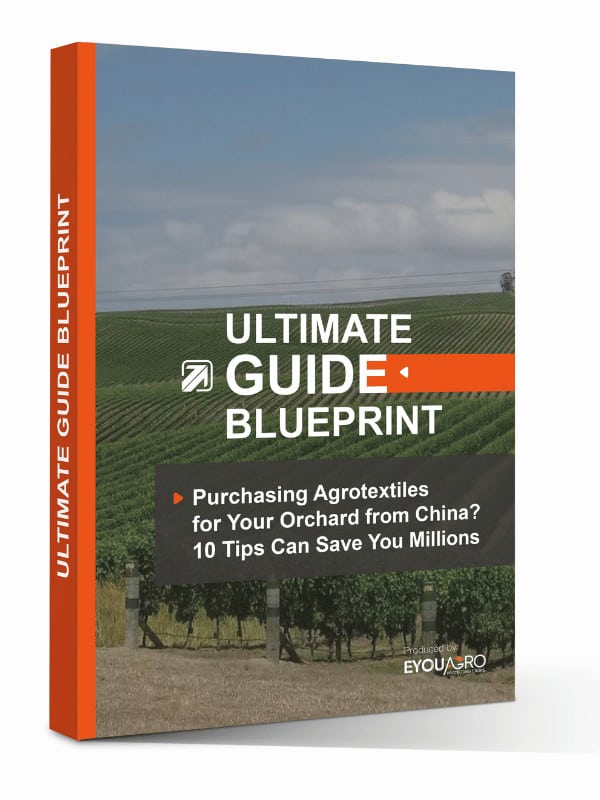Introduction
What is Weed Barrier?
Weed barriers also called landscape fabric are materials used in agriculture to control the growth of unwanted weeds. They are placed on the soil surface to prevent the germination of weed seeds or to inhibit the growth of established weeds.
Weed barriers can be made from a variety of materials, including organic and synthetic materials, and they can be biodegradable or non-biodegradable.
Jonathan Storkey‘s study showed
Intensification of agriculture and climate change have increased the threat of weeds (Jonathan Storke,2021 ).
The importance of weed control in agriculture cannot be overstated.
Weeds compete with crops for resources such as water, nutrients, and sunlight, which can reduce crop yields and quality.
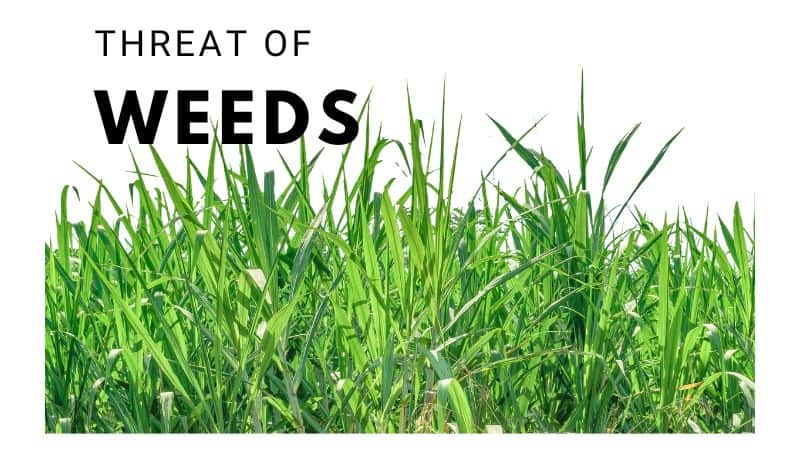
In the cultivation of soybeans (Christopher,2022) and corn (Christopher A, 2021) , scientists have observed that a large number of weeds can seriously affect the growth of the crop, thus reducing the growth yield.
This results in fewer weeds competing with crops for resources, which can improve crop yields and quality.
Weeds also provide habitats for pests and diseases, which can further harm crops. Additionally, weeds can be difficult and expensive to control using traditional methods such as manual weeding and herbicides.
With the extensive application of herbicides, weeds become more and more resistant to them (Jerry M, 2011).
The role of landscape fabric is more and more important.
The purpose of this article is to provide an overview of weed barriers and their benefits in agriculture.

By understanding the different types of landscape fabric and their advantages and disadvantages, farmers can make informed decisions about which weed barrier to use for their specific needs.
Furthermore, this article will introduce the unique features of EyouAgro weed barriers and how they can help promote sustainable agriculture practices.
Types of weed barriers
We divide weed barriers into different categories by materials and weaving methods.
Classified by Material
Synthetic weed barriers
Synthetic weed barriers are typically made from petroleum-based plastics such as polypropylene or polyethylene. They are designed to be placed on top of the soil to block sunlight and prevent weeds from growing through. Synthetic weed barriers are heavy duty landscape fabric, they are durable and can last for several years, making them a popular choice for weed control in agriculture. They are also effective in conserving soil moisture and reducing erosion. However, they are not biodegradable and can contribute to plastic pollution if not disposed of properly. Synthetic weed barriers may also be less breathable, which can impact soil health and affect the growth of desirable plants.

Organic weed barriers
Organic weed barriers are made from natural materials such as paper, cardboard, straw, or wood chips.
These materials of landscape fabric can be placed on top of the soil to prevent weeds from growing through or to block sunlight that stimulates weed germination. Organic weed barriers are biodegradable and can be tilled into the soil after use, adding organic matter to the soil. They are a more sustainable option compared to synthetic weed barriers because they do not contribute to plastic waste and are less harmful to the environment. However, they may not be as effective as synthetic weed barriers and may need to be replaced more frequently.
Biodegradable Landscape Fabric
Biodegradable weed barriers are made from materials that can break down naturally over time, such as paper, cornstarch, or biodegradable plastics.
These materials are designed to provide weed control while also being environmentally friendly. Biodegradable weed barriers can be tilled into the soil after use, where they will decompose and add organic matter to the soil.
This makes them a sustainable option for weed control in agriculture.
However, biodegradable weed barriers may not be as durable as synthetic options and may need to be replaced more frequently.
They also require proper disposal to ensure they break down properly and do not contribute to pollution.
Classified by Weaving Method
Woven Weed Barriers
Woven weed barriers are made of woven material using a weaving process. This involves interlacing yarns or fibers in a crisscross pattern to create a strong, durable material. The yarns used in woven weed barriers are typically made from polypropylene or polyethylene, which are both strong and resistant to damage from UV radiation and chemicals. The weaving process creates small, uniform openings in the fabric that allow for air and water to pass through, while still blocking the growth of weeds.

Woven weed barriers are known for their strength and durability, making them a popular choice for use in agriculture. They are resistant to tearing and puncturing, and can withstand heavy foot traffic and machinery. Woven weed barriers are also effective at preventing weed growth for several years, making them a long-lasting solution for weed control. However, the tight weave structure of the fabric can limit water and nutrient penetration, which may affect crop growth in some situations.
Non-woven Weed Barriers
Non-woven fabric are made using a process that involves bonding fibers together without weaving. The fibers used in non-woven weed barriers are typically made from polypropylene or polyester. These fibers are bonded together using heat, pressure, or chemical adhesives to create a strong, lightweight fabric. Non-woven weed barriers do not have the same uniform openings as woven weed barriers, but instead have a random structure that allows for air and water to pass through, while still blocking weed growth.
Non-woven weed barriers are known for their ability to allow for air and water exchange, making them a good option for use in agriculture. They are also lightweight and easy to install. Non-woven weed barriers are less durable than woven options, but can still be effective depending on the quality of the material.

They are less expensive than woven options, but may not offer the same level of strength and tear resistance.
Overall, the choice between woven and non-woven weed barriers depends on the specific needs of the farmer. Woven weed barriers are a more durable and long-lasting option, but may limit water and nutrient penetration. Non-woven weed barriers are a more affordable and lightweight option, but may not be as durable in some situations.
Benefits of using weed barriers
Using weed barriers in agriculture offers several benefits for farmers. Here are some of the key benefits:
Reduced weed growth:
Weed barriers are highly effective in suppressing weed growth in orchard, garden, flower bed or vegetable gardens.
By blocking out sunlight and preventing weeds from accessing nutrients and water, they can significantly reduce weed populations in farm, garden or flower beds.

Overall, using weed barriers in agriculture can provide a range of benefits that help to improve crop yields and quality while promoting sustainable practices. By choosing the right type of weed barrier and using it properly, farmers can effectively control weeds while conserving resources and protecting the environment.
Water Retention
Weed barriers help to retain moisture in the soil by reducing evaporation and offers.
This is especially important in dry or arid climates where water is scarce.
By conserving soil moist, weed barriers can reduce the amount of water needed for irrigation and improve water use efficiency.
Improved soil quality
Weed barriers can improve soil quality by reducing erosion and increasing the organic matter content of the soil.
Organic weed barriers, in particular, can decompose and add nutrients to the soil, which can promote healthy plant growth.
In addition, weed barriers can help to maintain soil structure and prevent soil compaction, which can improve water and nutrient uptake by crops.
Reduced need for herbicides
Weed barriers can reduce the need for herbicides, which can be harmful to the environment and human health. By controlling weeds without the use of chemicals, weed barriers can help to promote sustainable agriculture practices.
Furthermore, reduced herbicide use can save farmers money on inputs and reduce the risk of herbicide resistance in weeds.

While using weed barriers can offer many benefits to farmers, there are also important considerations to keep in mind to ensure that they are used effectively and sustainably.
Considerations When Using weed Barriers
Here are some key factors to consider:
Proper installation and maintenance
Weed barriers must be installed properly to be effective. This includes ensuring that the barriers are placed snugly against the soil surface and that there are no gaps or tears that can allow weeds to grow through. In addition, it’s important to regularly check and maintain the weed barriers to ensure that they remain in good condition over time. This may include repairing or replacing damaged sections, removing debris that can accumulate on top of the barriers, and ensuring that the barriers remain firmly anchored in place.
Compatibility with crops and soil types
Not all weed barriers are suitable for all types of crops and soil conditions. It’s important to choose a weed barrier that is compatible with the crops being grown and the type of soil being used. For example, some garden fabric of weed barriers may be more effective in sandy soils, while others may work better in clay soils. In addition, some crops may require more frequent irrigation, which can affect the performance of certain weed barriers. It’s important to carefully consider these factors when selecting a weed barrier.
Environmental impact
While weed barriers can offer many benefits, they can also have environmental impacts that need to be considered. Herbicides can have a serious impact on the environment. In addition, some weed barriers may affect soil health by reducing oxygen and microbial activity. Organic weed barriers, while generally more environmentally friendly, may also have drawbacks, such as being less durable and requiring more frequent replacement. It’s important to carefully consider the environmental impact of using weed barriers and to choose a product that is sustainable and environmentally responsible.
By considering these factors when using landscape fabrics, farmers can effectively control weeds while also promoting sustainable agriculture practices. Proper choice, installation and maintenance, compatibility with crops and soil types, and environmental impact are all important considerations to keep in mind when selecting and using weed barriers.
Eyouagro Synthetic Weed Barrier
EyouAgro is a professional manufacturer of agricultural protection materials, including landscaping fabric.

In order to solve the traditional synthetic weed barrier problem – uncirculated air. Our research and development team spent two years in consultation with our farm customers to develop a new generation of landscaping fabric.
Our research and development team spent two years in consultation with our farm customers to develop a new generation of weed barrier fabric.
Our weed barriers are designed to improve on the shortcomings of traditional polypropylene and polyethylene materials. We improved the manufacturing technology and use a breathable micro-gap structure to make the landscape fabric permeable and allowing air to pass through.
The special permeable landscape fabric on the surface allows water and air to freely enter and exit, protecting the soil while controlling weed growth.
We have also added special anti-aging agents to improve its uv resistant, which have been rigorously tested in our laboratory and can withstand outdoor environments for 3-5 years.
In order to carry superior weed control, our team has spent years experimenting to produce a new generation of heavy duty landscape fabric that is durable , soil friendly, and uv protection.
Cost of Weed Barriers
EyouAgro Woven Weed Barrier
Using weed barriers can provide a cost-effective solution for weed control in agriculture. The price of woven weed barriers can vary depending on the material and size, but on average, the cost of EyouAgro woven weed barrier is approximately $387-$415 USD per 1000 square meters. While the initial cost of weed barriers may be higher than traditional manual weeding methods, the long-term cost savings can be significant.
The annual cost of using weed barriers is estimated to be around $97-$103 USD per 1000 square meters. This cost includes the maintenance and replacement of the weed barriers as needed. Compared to the cost of manual weeding, which can involve hiring 1-2 workers for several weeks each year, using weed barriers can result in significant cost savings over time.

In addition to cost savings, using weed barriers can also provide other benefits such as reducing the need for herbicides, improving soil quality, and conserving water. By controlling weeds without the use of chemicals, weed barriers can help to promote sustainable agriculture practices while still achieving effective weed control.
Overall, while the initial cost of using weed barriers may be higher than traditional weeding methods, the long-term cost savings and other benefits make them a cost-effective solution for weed control in agriculture.
Conclusion
In conclusion, using weed barriers is an effective way to control weed growth and improve agricultural practices.
Organic, synthetic, and biodegradable weed barriers each have their advantages and disadvantages, and choosing the right one depends on the specific needs of each farmer.
EyouAgro offers best landscape fabric or weed barrier that is both effective and environmentally friendly, helping to promote sustainable agriculture practices.




